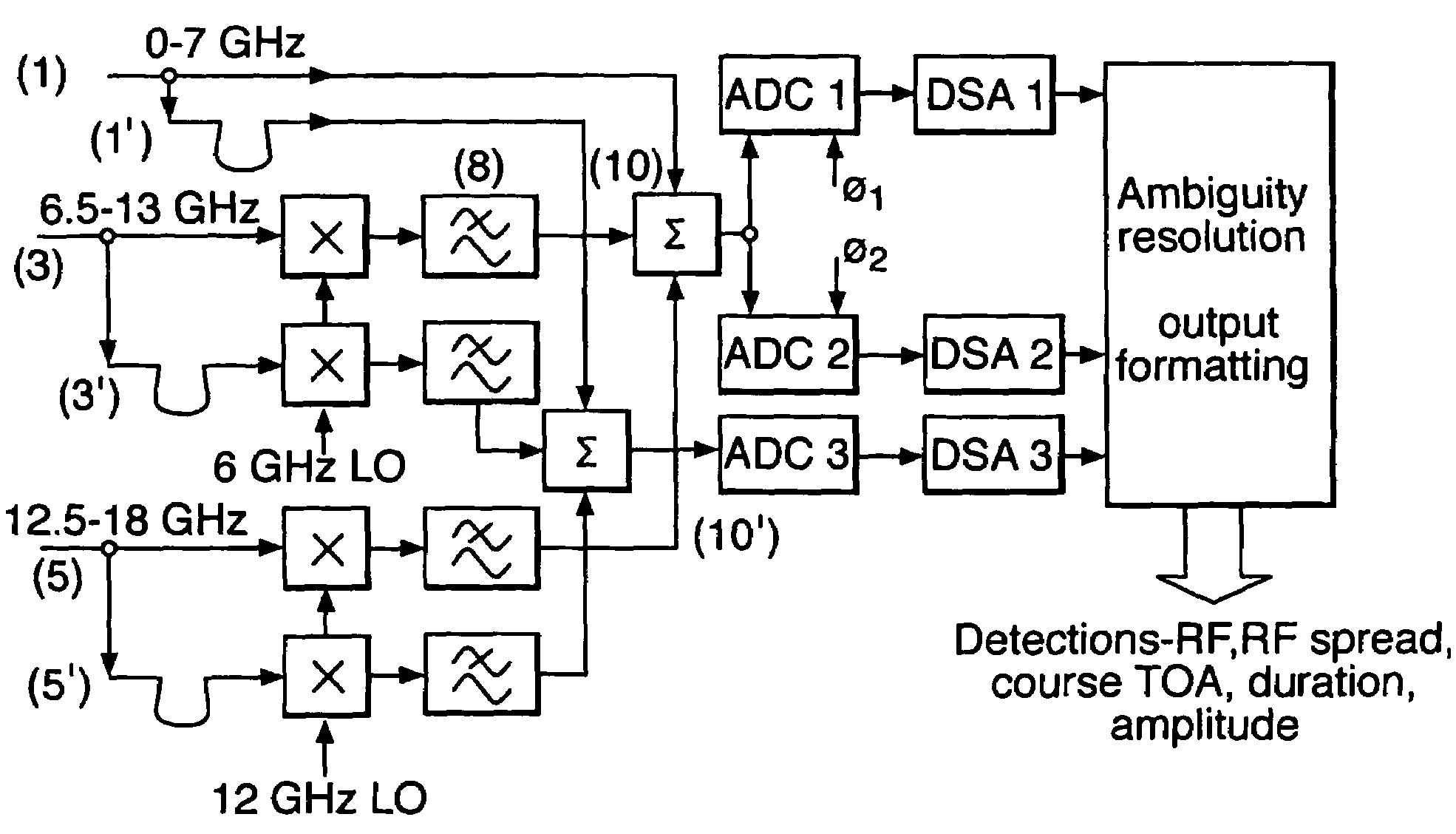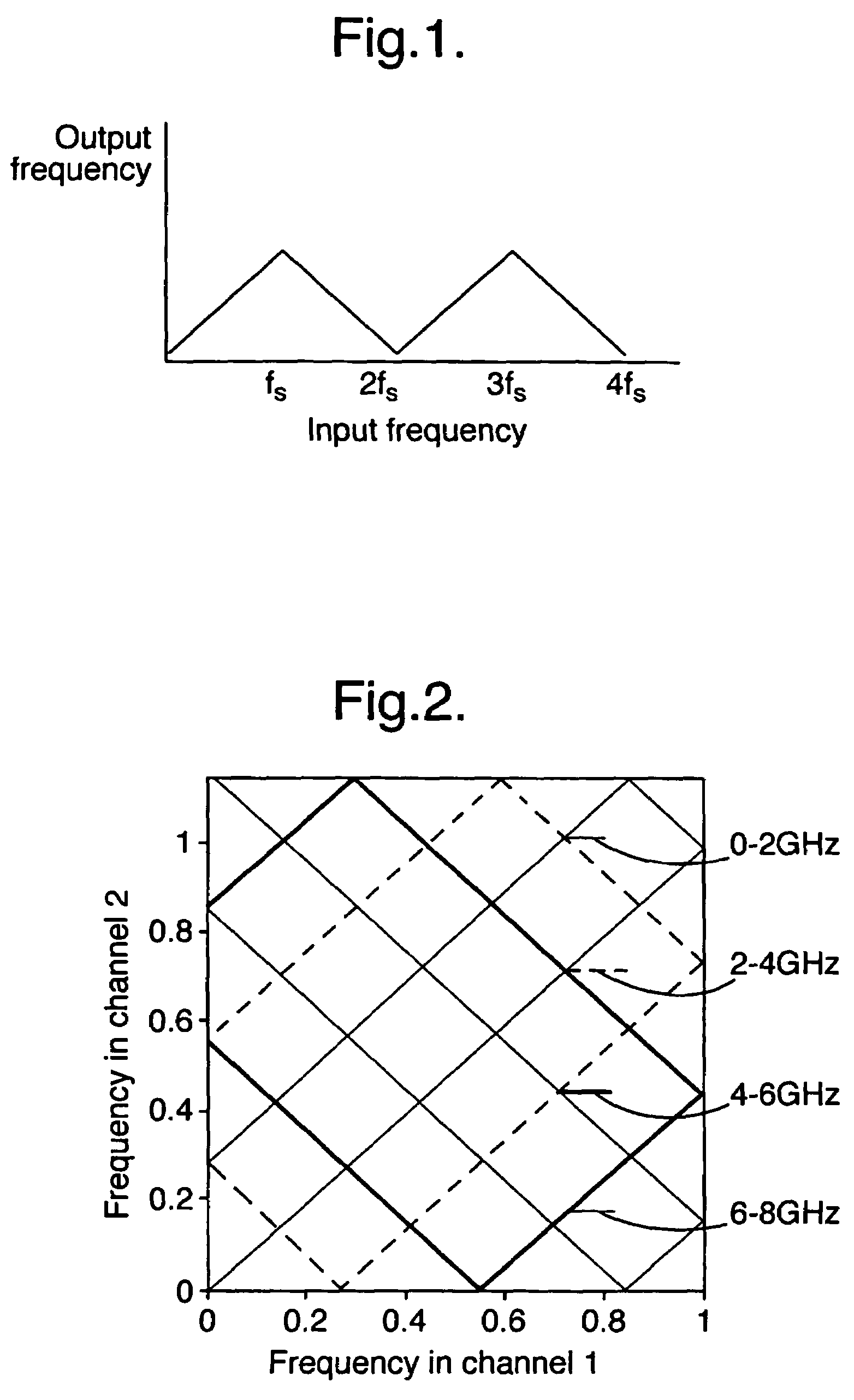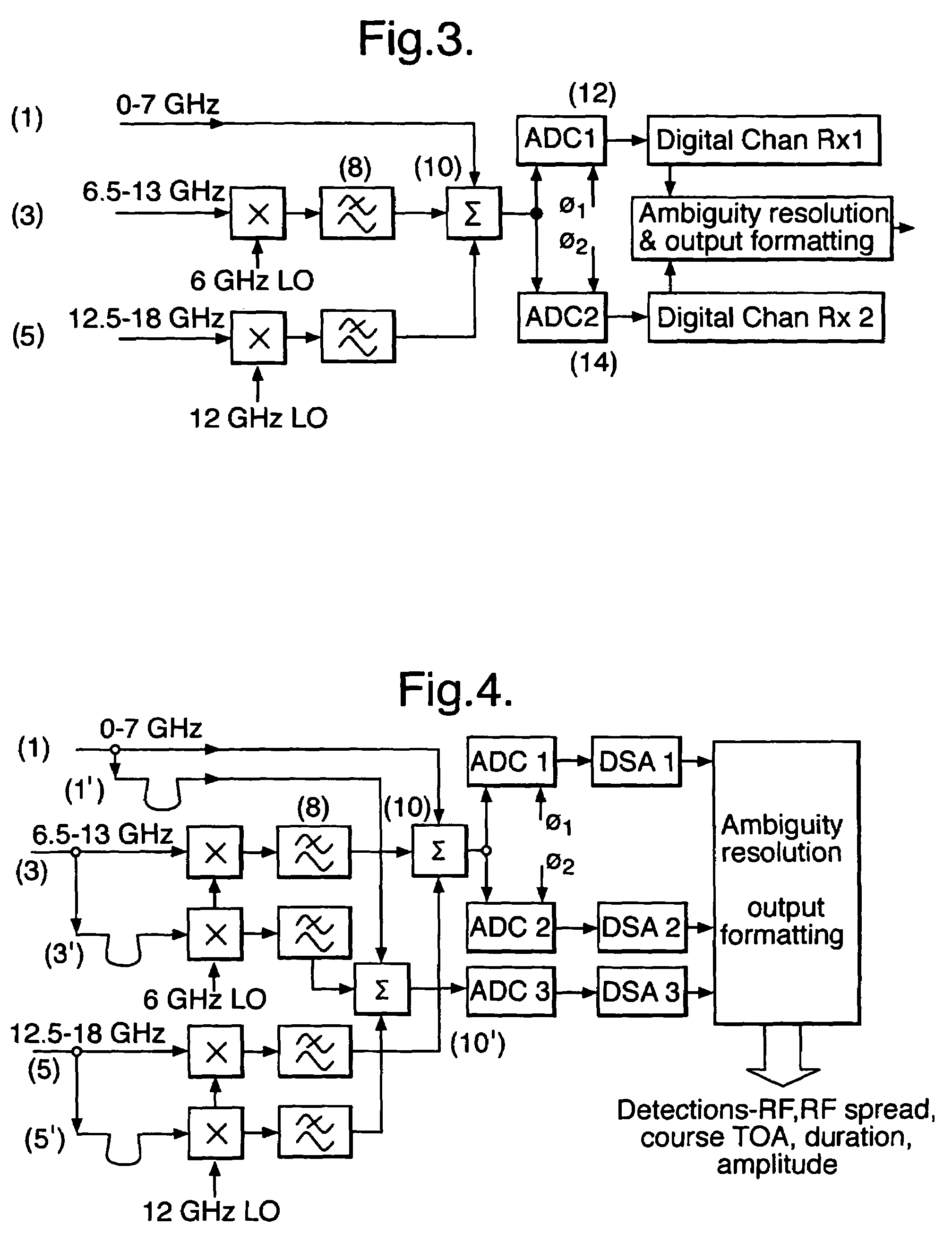Digital electronic support measures
a technology of electronic support measures and digital circuits, applied in the field of digital electronics, can solve the problems of inability to meet the requirements of wide frequency coverage, the limitation of wide-band receiver systems in handling more than one signal at a time, and the high cost of analogue channelised architectures, so as to achieve the effect of simplifying the receiver in the present invention and simple manipulation
- Summary
- Abstract
- Description
- Claims
- Application Information
AI Technical Summary
Benefits of technology
Problems solved by technology
Method used
Image
Examples
Embodiment Construction
[0035]Turning first to FIG. 1, the sampling frequency is fs. This figure shows that at multiples of this frequency the measured output frequency ‘folds back’ on itself, so that several different input frequencies may give rise to the same output frequency.
[0036]When the same input signal is run at two different clock rates, a known difference in the output signal between the two frequencies is created, which increases at multiples of the sampling frequency. FIG. 2 plots the frequency measured in each of two channels as the input frequency increases, starting at the origin, and moving around the diagram in an anti-clockwise spiral, reflecting off the main axes as shown. All lines have slope +1 or −1 Where the gradient is +1, the relationship between the two frequencies is characterised by a common difference, and likewise, where the gradient is −1, the two frequencies sum to a constant value. The sub-band from which the signal originated can be recognised by identifying the known set...
PUM
 Login to View More
Login to View More Abstract
Description
Claims
Application Information
 Login to View More
Login to View More - R&D
- Intellectual Property
- Life Sciences
- Materials
- Tech Scout
- Unparalleled Data Quality
- Higher Quality Content
- 60% Fewer Hallucinations
Browse by: Latest US Patents, China's latest patents, Technical Efficacy Thesaurus, Application Domain, Technology Topic, Popular Technical Reports.
© 2025 PatSnap. All rights reserved.Legal|Privacy policy|Modern Slavery Act Transparency Statement|Sitemap|About US| Contact US: help@patsnap.com



